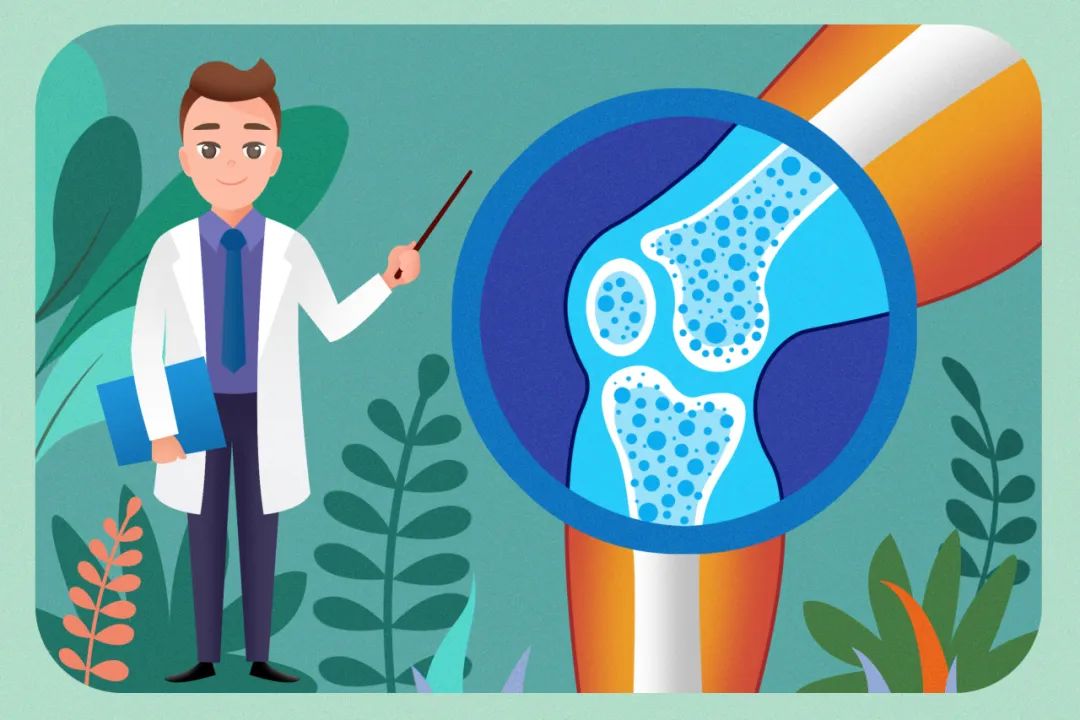October 20 is World Osteoporosis Day. This year's theme is "Strengthen muscle, strengthen bone, prevent bone loss".
Who is susceptible to osteoporosis?
1. Menopausal women
2. Age > 50 years old
3, less physical activity, lack of sun exposure, smoking, excessive drinking or coffee, heavy salt diet
4. Patients with family history of osteoporosis.
It is worth mentioning that many people think that osteoporosis is a disease of old age and only old people can get it, but in fact, bone loss is silent and starts at the age of 30. 30-35 years old bone loss begins, 36-49 years old slow reduction, 50-69 years old rapid reduction, 70 years old and continue to reduce, so it is recommended that after the age of 30, we begin to pay attention to bone health, timely and effective measures to prevent and treat osteoporosis.
How to recognize osteoporosis? Pain: Pain is the most common and main symptom of osteoporosis, and it is more common in the lower back.
Shortened height and hunched back: it is caused by vertebral deformation caused by osteoporosis, which is one of the important clinical signs; Fracture: The most serious consequence of osteoporosis is fracture. Common sites include the hip, thoracolumbar spine, distal radius, proximal humerus, and ankle. If you suspect that you have osteoporosis, you can go to the hospital for bone imaging and bone density testing. In addition, some laboratory tests to reflect the level of serum calcium, such as serum calcium, phosphorus and alkaline phosphatase, serum parathyroid hormone, etc.
So how to prevent osteoporosis?
Get in the sun
Receive sufficient sunlight exposure every day, the time between 10:00 and 14:00 is ideal, the exposure time is 5 to 10 minutes, 2 to 3 times a week;
The Science Movement
Exercise for about half an hour every day, according to their own physical condition, appropriate choice of walking, fast walking, jogging, swimming, etc.;
Eat a reasonable diet
Eat foods rich in calcium and vitamin D, such as milk, shrimp skin, vegetables, soy products, nuts, animal liver, fish, egg yolks, etc. Limit asparagus, spinach and other foods containing oxalic acid, so as not to affect the absorption of calcium, and do not drink excessive coffee and carbonated drinks;
Calcium and vitamin D supplementation were given
The recommended daily calcium intake is 800mg for adults and 1000 mg for postmenopausal women and the elderly. The recommended dose of vitamin D is 400IU/d for adults and 600IU/d for people over 65 years old.
Improve bone health and prevent fractures
The most ideal treatment for fracture is to prevent the occurrence of fracture, which is particularly important for the elderly. Whether or not a previous fracture has occurred, there are simple measures that older adults can take to improve bone health in their daily lives.
In terms of lifestyle
The elderly can pay attention to the following points.
Strengthen nutrition, eat a balanced diet, and increase the intake of foods rich in calcium, such as dairy products, soy products, seafood, nuts, green leafy vegetables, etc.
Ensure adequate, direct sunlight, at least half an hour a day.
Keep regular exercise, such as walking, tai chi, dancing, yoga, etc.
Quit smoking and avoid excessive alcohol, coffee and fizzy drinks.
Adopt living facilities to prevent falls, such as non-slip MATS and handrails in the toilet.
In addition, daily supplementation of adequate calcium and vitamin D is also an effective means to maintain bone health. Generally speaking, 500~600 mg of calcium per day, vitamin D31000~2000 international units (IU), can meet the needs of most elderly people.
A warm reminder
For patients who have been clearly diagnosed with osteoporosis or have had a fragility fracture, the above measures alone are not enough to achieve the purpose of treatment, and they also need to receive long-term and standardized treatment under the guidance of doctors specializing in osteoporosis.









